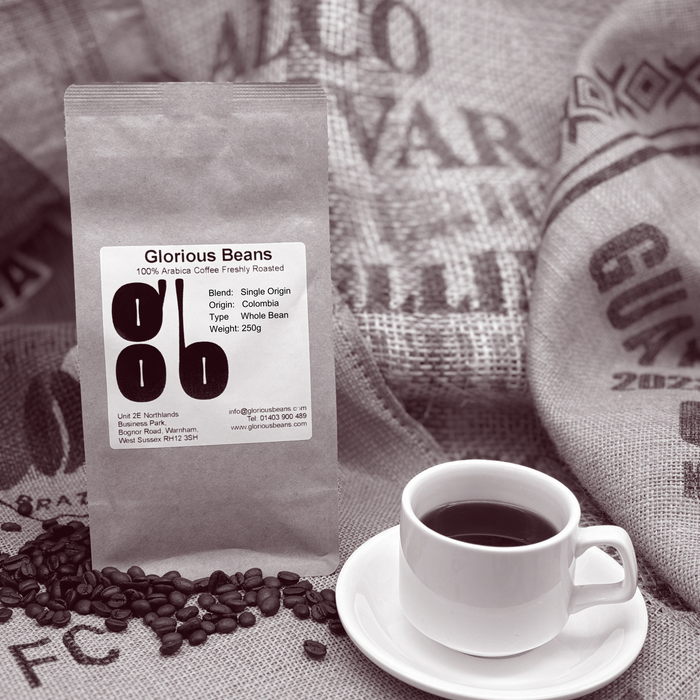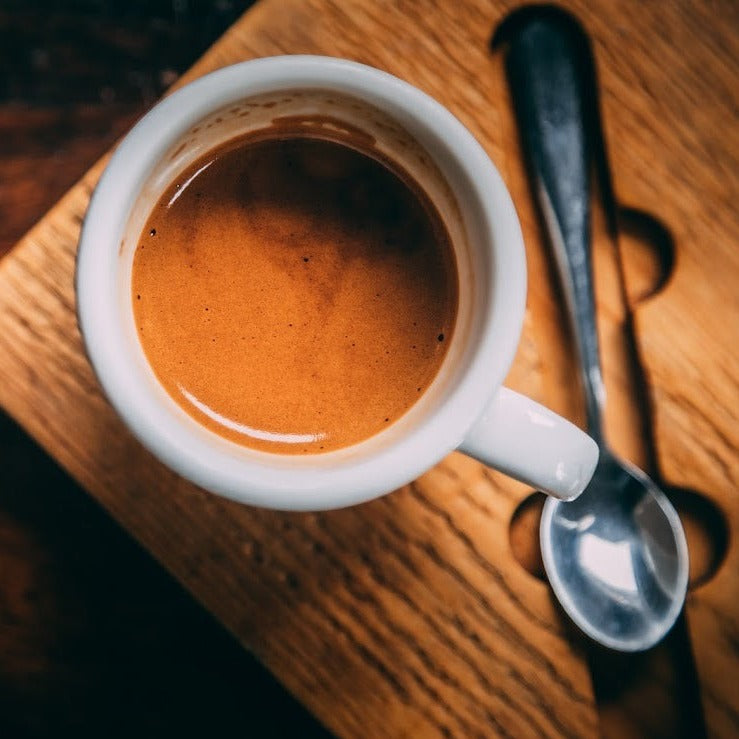How SOE Single Origin Espresso Improves Your Morning Routine
How SOE Single Origin Espresso Improves Your Morning Routine
Blog Article
Recognizing Coffee Beans: the Trip From Espresso to Blended Coffee Beans

The Beginnings of Coffee: A Global Perspective
While you might consider coffee as a contemporary staple, its origins map back centuries, linking with societies around the world. The tale begins in Ethiopia, where legend says a goat herder named Kaldi discovered the invigorating impacts of coffee beans after noticing his goats romping vigorously after eating them. This triggered interest, causing coffee's spread to Arab traders that cherished the brewed drink. By the 15th century, it reached Persia, Egypt, and Turkey, where coffeehouses came to be social centers for conversation and society.
As trade paths increased, coffee made its means to Europe in the 17th century, quickly acquiring appeal. Each society included its unique twist to coffee preparation, improving its background.
Cultivation and Harvesting of Espresso Beans
As coffee's journey developed, the focus shifted to the farming and harvesting of particular bean varieties, particularly those used for espresso. You'll locate that coffee beans often come from Arabica or Robusta plants, each offering distinct flavors. The suitable expanding conditions include high altitudes and abundant, well-drained soil, which boost the beans' quality.
Throughout the harvest, picking approaches vary. Timing is important; you want to collect when the cherries get to peak ripeness for maximum flavor.
When collected, the beans are gotten ready for handling, which is important in identifying their last preference. Comprehending the cultivation and harvesting processes offers you insight into what goes right into your favorite coffee, enhancing your gratitude for every cup.
Processing Approaches: From Cherry to Bean
Now that you've discovered about collecting espresso beans, let's check out how those cherries transform right into the coffee beans you like. You'll see how different harvesting methods effect taste, adhered to by the necessary steps of fermentation and drying out. Finally, we'll damage down the milling and grading procedure that establishes your coffee's quality.
Gathering Techniques Clarified
When it involves coffee, recognizing harvesting strategies is necessary, since they directly impact the flavor and quality of the beans you appreciate. There are 2 main techniques: selective picking and strip picking. Careful choosing entails hand-picking only ripe cherries, ensuring you obtain the very best quality beans. This method usually brings about a richer taste profile, though it's more labor-intensive. On the various other hand, strip picking ways collecting all cherries at the same time, regardless of perfection. While it's quicker and more affordable, this can cause a mix of tastes, affecting the final item. Ultimately, the choice of gathering strategy can substantially influence your coffee experience, so it's worth understanding how those beans made it to your mug.
Fermentation and Drying
After gathering, the next steps in handling coffee beans play a substantial role fit their taste. You'll discover that fermentation is crucial, as it helps break down the mucilage bordering the beans, improving their taste profile. Depending on the method, this procedure can last from a couple of hours to a number of days, with varying outcomes based upon temperature level and moisture.
Once fermentation is complete, drying follows, which is just as important. You can select from mechanical or sun-drying drying out methods. Sun-drying allows the beans to soak up tastes from the environment, while mechanical drying guarantees consistent moisture degrees no matter weather condition. Proper drying out is vital to avoid mold and mildew and maintain the beans' high quality, ultimately affecting your mug of coffee.
Milling and Grading Refine
As fermentation and drying out established the stage for flavor development, the milling and grading process guarantees that just the best coffee beans make it to your mug. This phase entails getting rid of the external layers of the coffee cherry, consisting of the parchment and husk. High-quality beans obtain a greater quality, resulting in a richer coffee experience.
Roasting Strategies: Unlocking Taste Potential
When you roast coffee beans, the approach you pick can significantly impact the flavor account. Understanding the relationship in between time, temperature level, and toasting strategies is vital to revealing the potential of your brew. Let's explore exactly how these elements come with each other to create the best cup.
Toasting Approaches Explained
While you may assume that all coffee roasting methods yield the exact same outcomes, the truth is that each strategy reveals one-of-a-kind flavor potentials in the beans. Drum roasting makes use of a rotating drum to equally disperse heat, enhancing caramelization and creating a balanced flavor. Air roasting, on the various other hand, circulates warm air around the beans, promoting a lighter roast with obvious level of acidity.

Effect On Taste Profile
Different toasting methods not only influence the procedure but likewise greatly influence the taste account of the coffee beans. Dark roasts, on the other hand, bring out strong, smoky tastes, occasionally masking the bean's distinct characteristics. Recognizing these nuances assists you value the creativity behind your cup of coffee, enhancing your general experience with every sip.
Time and Temperature Elements
To release the full flavor possibility of coffee beans, both time and temperature during the roasting process play significant functions. When roasting, you'll locate that higher temperatures can rapidly develop tastes, yet if you hurry it, you might wind up with burnt notes. Conversely, reduced temperature levels enable for a much more gradual taste growth, showcasing the beans' unique qualities.

Timing is equally as vital; extending the roast as well long can bring about a loss of level of acidity and brightness, while also short a roast may leave the beans underdeveloped. Discovering that pleasant spot requires practice and experimentation. By changing these variables, you can reveal the rich, complex tastes concealed within each bean, developing a genuinely exceptional coffee experience.
The Art of Mixing: Crafting Special Coffee Profiles

Beginning by picking a base coffee that gives a solid foundation. After that, pick complementary beans to improve details taste notes. A brilliant Ethiopian bean can bring fruitiness, while a rich Brazilian coffee adds body. Testing is crucial-- do not hesitate to readjust ratios until you locate your excellent account.
As you blend, keep in mind that each combination narrates. You're not simply making coffee; you're developing an experience. So, take your time, preference often, and appreciate the trip of uncovering your trademark blend.
Developing Methods: Just How Prep Work Impacts Taste
Mixing coffee opens up a domain of taste opportunities, however exactly how you brew that mix can considerably affect your last cup. Different developing approaches remove one-of-a-kind tastes and aromas, so it's crucial to select wisely. As an example, a French press allows Click This Link oils and debris to continue to be, developing an abundant, robust experience. On the various other hand, a pour-over highlights the coffee's quality and brightness, best for showcasing delicate notes.
Coffee, with its high stress, creates a concentrated shot that emphasizes sweet taste and crema. If you like a lighter brew, consider a cold mixture technique; it generates a smooth, much less acidic taste.
Adjusting variables like water temperature, grind dimension, and brew time can transform your coffee's account. Welcome the art of brewing to uncover the tastes hidden in your coffee blends.
The Future of Coffee: Sustainability and Development
As the coffee industry progresses, sustainability and innovation are coming to be vital for dealing with ecological difficulties and conference consumer needs. You'll notice that more coffee business are adopting environmentally friendly techniques, from sourcing beans fairly to applying sustainable farming techniques. These shifts not only assist the earth yet also improve the top quality of the coffee you enjoy.
You might see technologies like biodegradable product packaging and water-saving developing methods that lower waste. Advanced innovation, such as blockchain, is additionally ending up being preferred, making sure transparency in the supply chain, which allows you to trace your coffee back to its beginnings.
On top of that, investing in local communities and supporting farmers via fair profession campaigns cultivates an extra lasting coffee ecosystem. As you drink your next cup, keep in mind that your choices can add to a brighter future for coffee. By choosing lasting brand names, you're not just taking pleasure in a beverage; you're making a positive effect on the globe.
Often Asked Concerns
What Is the Distinction In Between Arabica and Robusta Beans?
Arabica beans are smoother, sweeter, and have a higher acidity, while robusta beans are stronger, much more bitter, and have more high levels of caffeine. When brewing your coffee., you'll see these distinctions in flavor and aroma.
Just How Does Elevation Affect Coffee Bean Taste?
Altitude impacts coffee bean flavor substantially. Greater altitudes create beans with brighter acidity and facility tastes, while reduced altitudes commonly produce beans that are much heavier and much less nuanced. You'll see these distinctions in your cup!
What Are the Health Conveniences of Alcohol Consumption Coffee?
Drinking coffee can increase your power, enhance psychological focus, and also enhance physical performance. It's rich in antioxidants, may lower the risk of particular conditions, and can advertise a healthier metabolic rate when eaten in moderation.
Can Coffee Beans Be Reused for Brewing?
Yes, you can recycle coffee beans for developing, but the flavor could be weak. If you delight in trying out, try reusing them in various ways, like chilly mixtures or why not try this out including in smoothie mixes for an added kick.
Just how Should I Store Coffee Beans for Quality?
To keep your coffee beans fresh, keep them in an airtight container in a trendy, dark location. Avoid revealing them to light, warmth, or wetness, as these elements can promptly weaken their taste and fragrance.
Recognizing Coffee Beans: the Trip From Espresso to Blended Coffee Beans.
Now that you have actually discovered concerning collecting coffee beans, let's explore exactly how those Homepage cherries transform into the coffee beans you like.When you roast coffee beans, the approach you choose can significantly affect the taste profile - Single Origin Espresso.While you could believe that all coffee roasting techniques yield the exact same outcomes, the truth is that each method reveals one-of-a-kind flavor potentials in the beans.Different toasting techniques not just influence the process but additionally substantially impact the flavor profile of the coffee beans
Report this page